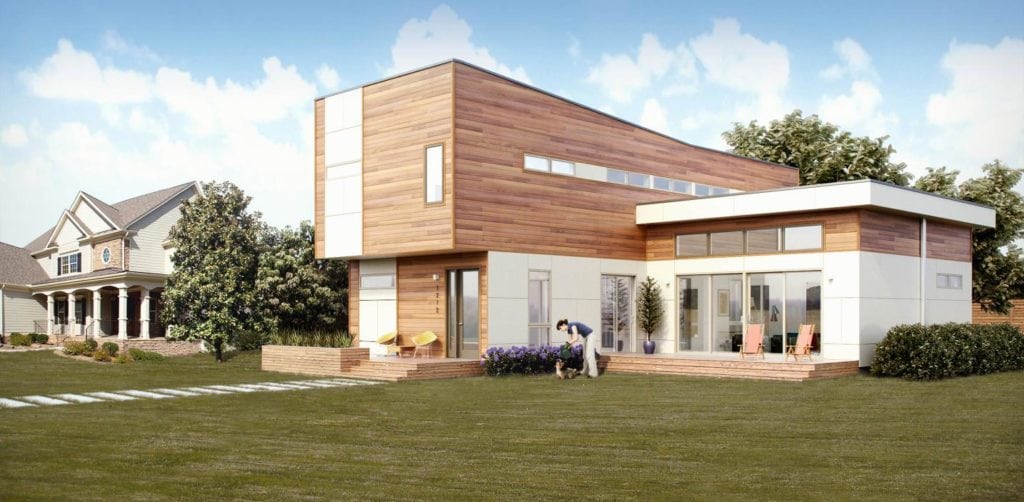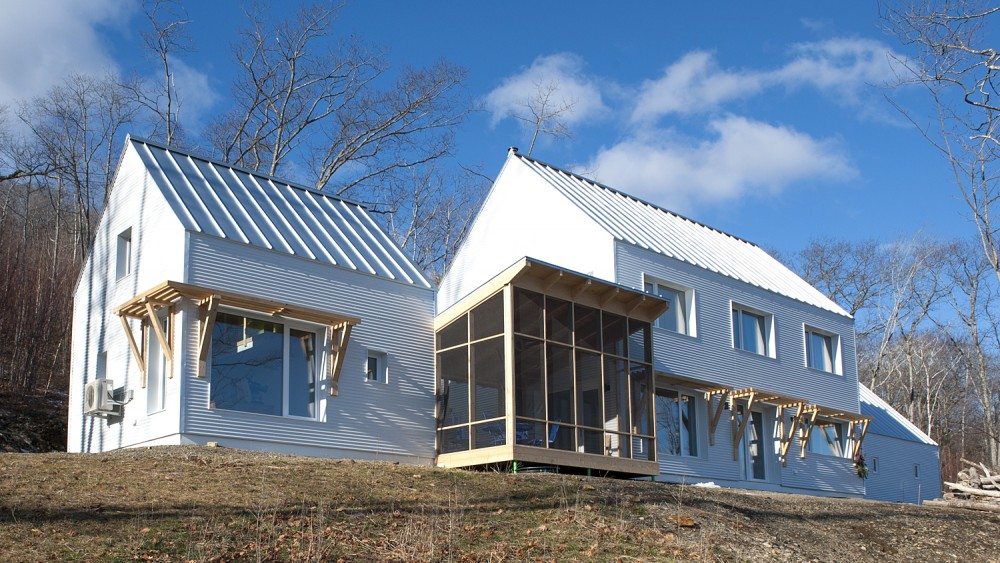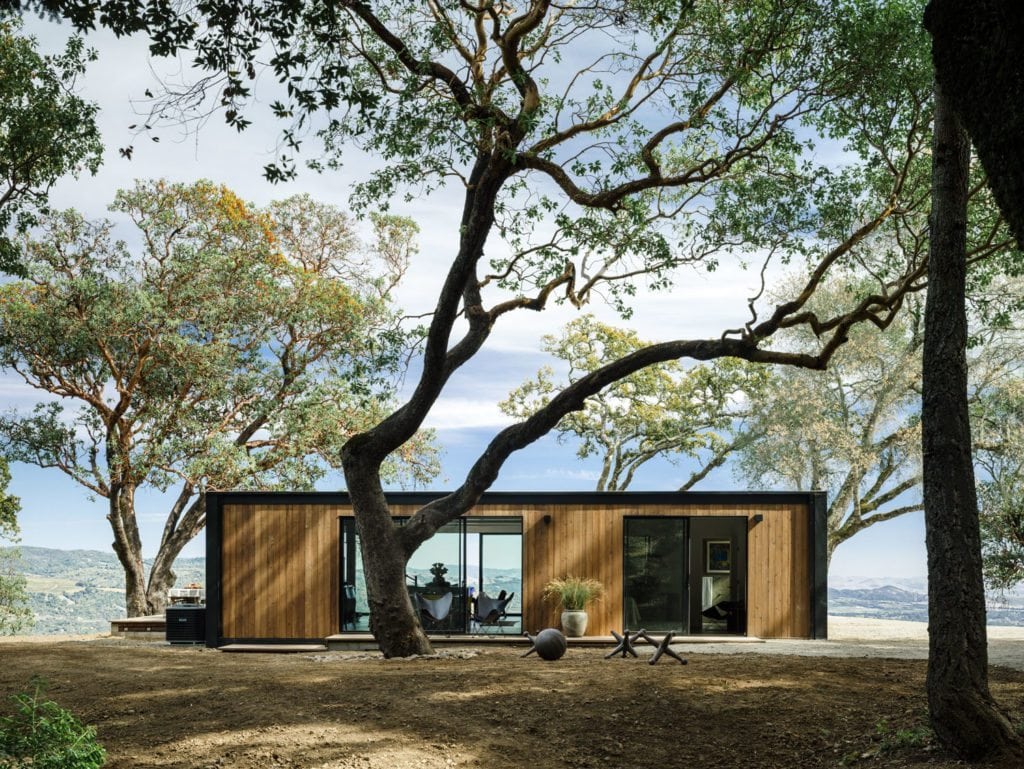Modular homes have certainly come a long way. In the past decade, they’ve moved past the shoddy construction and low-quality lineage of their predecessors to become dynamic structures, highly prized for their boxy, modern appearance. And with a relatively small square footage and factory-made production, prefab homes offer a chance to be gentler on the environment, too. Accordingly, a number of modular home builders have thrown their hats into the green building ring, designing a variety of different offerings to help customers take an innovative approach to their impact on their environment.
Since modular homes come nearly preconstructed, building your ideal eco-home often comes down to choosing the environmental features that matter the most to you. Would you rather have a net-zero home or one that uses VOC-free materials? Either way, there’s likely a model out there that will suit your needs.
Once you have the land, you’re ready to take on the challenge (and fun!) of selecting and designing a modular home that works for you. The vast majority of prefab home companies will allow you to pick and choose between features, colors, and design, and many green modular builders are intimately aware of how these affect their home’s environmental performance, as well. In fact, some may even be able to offer advice on site designation and orientation.

Achieving LEED Certification
Customization is where it’s at for these homes. Companies like Hive Modular and LivingHomes both allow you to handpick the features you like to achieve a gold, silver, or platinum LEED certification, a green building standard given to homes that meet a number of different qualifications for energy and water efficiency, materials, and environmental impact. These full-service homes come with all the bells and whistles, including LED lighting, cork floors, Low-E windows, low flow plumbing, and even efficient appliance packages. Of course, all of those green features come at a price—most LivingHomes models start in the high 200s. Still, that’s much more affordable than retrofitting an existing home and with a sleek, modern look, they definitely take the award for cool.

Net-zero and High Energy Performance Homes
Many modular home companies bill their homes as net-zero ready, meaning their models generate at least as much energy as they consume from the grid. Silicon Valley darling BluHomes and Seattle’s Method Homes both bear this distinction. In fact, with high-efficiency features like insulated ceilings, and by incorporating passive design features like thermal mass, Method Homes offers a fully integrated energy solution. However, most modular homes do not come complete with solar panels, which you’ll need if you want to truly achieve net-zero or off-grid status. Purchasing solar can add several thousand dollars to your build—but the return on investment timeframe is fairly short for smaller, high-efficiency homes, meaning soon you’ll be generating energy virtually for free.

Passive Solar Design
Speaking of passive design, that’s another way prefab homes stand head and shoulders above conventional builds when it comes to green features. These innovative models use sophisticated construction techniques to lower residents’ heating and cooling use—almost to zero, at least according to passive home designer Ecocor. Their building philosophy takes into consideration a home’s natural environment and climate, using tightly-constructed and thoroughly insulated structures that ward off cold and keep heat inside, where it belongs. And with a framed wood exterior and modern log-cabin look, they definitely capture a rustic, self-sustainable ethos in their appearance as well.

Low Impact Builds
One of the major benefits of prefab homes is their low construction waste footprint—after all, as mass-produced structures, they typically don’t generate the kinds of odds and ends that most home builds do. However, Connect:Homes takes this idea to another level entirely. They deliver their homes 90 percent built to reduce shipping waste and to take advantage of their streamlined factory process, all of it from a single location in California, which they claim lowers their product’s overall footprint. But the “Connect” part of their home comes from the company’s mission to reconnect residents to the outdoors. With wide, open windows and doors and plenty of natural light, these structures have a cool, contemporary feel that surpasses the shipping container aesthetic of many modular homes.
Whether you plan to go with a luxe modular designer or a simpler model, focusing on your new home’s insulation, heating and cooling systems, windows, and energy generation definitely gets you plenty of green points in our book. Knowing your new space is environmentally-friendly? That’s definitely one way to rest easy at home.
 Erin Vaughan is a blogger, gardener and aspiring homeowner. She currently resides in Austin, Texas, where she writes full time for Modernize, with the goal of empowering homeowners with the expert guidance and educational tools they need to take on big home projects with confidence.
Erin Vaughan is a blogger, gardener and aspiring homeowner. She currently resides in Austin, Texas, where she writes full time for Modernize, with the goal of empowering homeowners with the expert guidance and educational tools they need to take on big home projects with confidence.
